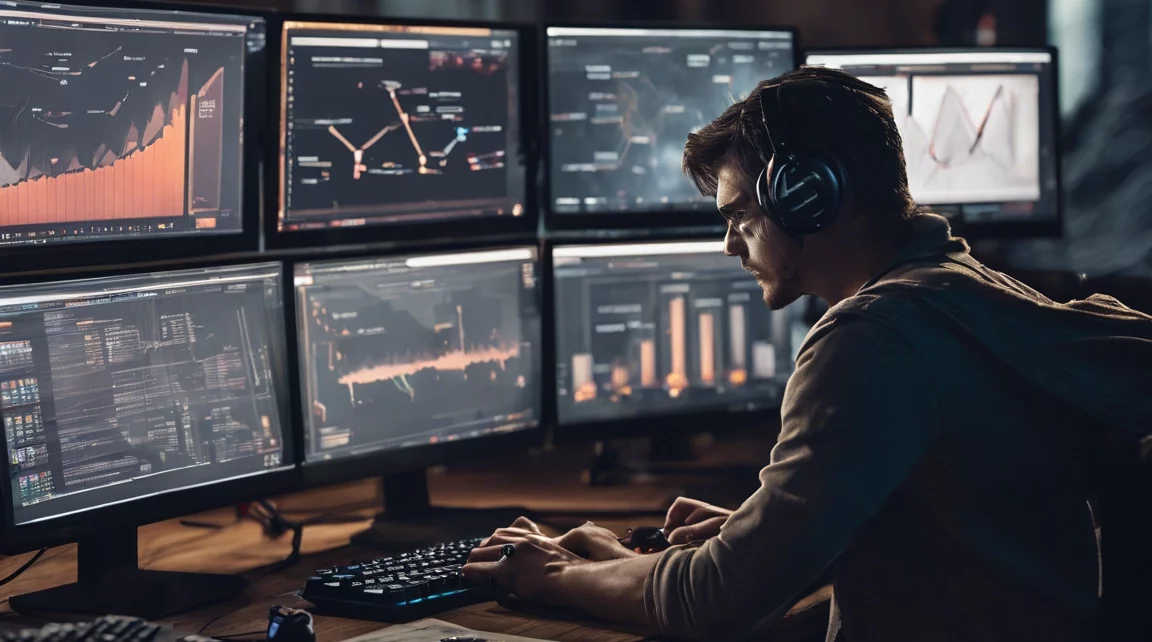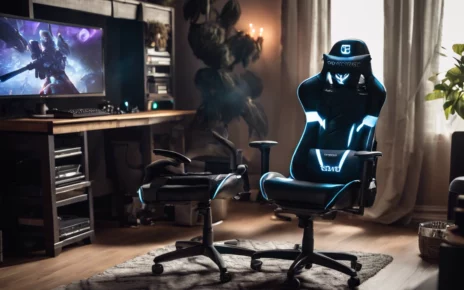Improving at your favorite video game hinges on understanding your strengths and weaknesses. This process, often referred to as gameplay analysis, is essential for serious gamers looking to enhance their skills. In this guide, we’ll explore effective strategies for analyzing your gameplay, tools to aid your improvement, and the importance of a positive mindset.
Identify Your Strengths and Weaknesses
The first step in analyzing your gameplay is to identify your strengths and weaknesses. This might sound harsh, but recognizing areas where you excel versus those where you struggle is key to your growth as a player.
- Strengths: Maybe you have excellent strategic thinking but struggle with execution. Understanding what you do well can help build your confidence and motivate you to tackle the areas where you need improvement. For instance, if your tactical decisions are sharp, you can focus on executing those strategies more effectively during gameplay.
- Weaknesses: Perhaps your aim is precise, but teamwork remains a challenge. Being aware of these gaps allows you to actively work on them, ensuring that they don’t hold you back in competitive scenarios. Consider areas like communication, positioning, or understanding game mechanics that may require additional focus.
Use Metrics and Stats for Insight
Game metrics and stats are more than just numbers; they are invaluable tools for improvement. Take time to dive into these metrics to identify trends, such as your shot accuracy or reaction times compared to other players. By analyzing this data, you can pinpoint which skills need more attention and which come naturally.
- Game-Specific Metrics: Many games offer in-game statistics that can provide insight into your performance. Track metrics such as kill/death ratios, average score per game, and objective captures to gauge your effectiveness.
- Comparative Analysis: Consider comparing your stats with those of other players, particularly those who perform well in the game. This benchmarking can provide a clearer picture of where you stand and what you might need to improve.
- Track Progress Over Time: Regularly reviewing your metrics will not only show you how far you’ve come but also highlight any stagnation in your progress. This awareness will help you adjust your training focus as necessary.
Record and Replay Your Gameplay
Recording and replaying your gameplay sessions can significantly enhance your analysis. Observing your performance allows you to notice details that might escape you in the heat of the moment.
- Identify Patterns: Look for recurring mistakes or successful strategies you can replicate. Take notes during these viewings; note the decisions you made and their outcomes. This practice helps you connect the dots between your actions and the results.
- Self-Reflection: Watching your gameplay can provide valuable insights into how you respond to different situations. Consider questions like:
-
- What worked well during this match?
- Were there moments when panic set in, and how did it affect my performance?
- Could I have communicated better with my team?
Set Achievable Goals
Setting goals is crucial for tracking your improvement. However, it’s essential to set realistic and achievable objectives. Instead of aiming for an overnight transformation, establish bite-sized goals that lead to small wins. This approach keeps frustration at bay while maintaining motivation as you gradually level up your game.
Example Goals:
- Increase your accuracy by 10% over the next month.
- Improve your teamwork by participating in at least three cooperative game sessions per week.
- Master a new character or role within a specified timeframe.
- Increase your game knowledge by watching tutorials or guides for 30 minutes a week.
Goal-Tracking Methods:
- Visual Progress Tracking: Consider creating a visual chart or journal where you can mark your achievements. This not only provides motivation but also allows you to celebrate small victories along the way.
- Accountability Partners: Team up with fellow gamers to keep each other accountable. Sharing your goals with someone else can increase your commitment to achieving them.
Tools and Techniques for Gameplay Analysis
The right tools can significantly enhance your gameplay analysis process. Here are some effective tools and techniques to consider:
- Game-Specific Software: Explore applications designed specifically for your gaming platform (PC, console, or mobile). These tools often feature video replay and screen recording capabilities, allowing for in-depth analysis of your gameplay.
- Analytics Tools: Heat maps and advanced analytics can reveal your most active areas and frequent mistakes, offering a bird’s-eye view of your gameplay patterns. For instance, some FPS games provide heat maps showing where you get shot the most, which can inform your positioning strategies.
- Choose the Right Tools: Depending on your learning style, select tools that provide detailed reports or visual analysis to cater to your needs. For example, some software might offer numeric feedback on your performance, while others allow you to analyze video clips for a more hands-on approach.
Recommended Tools:
- OBS Studio: For screen recording and live streaming, this open-source software is a favorite among gamers. It allows you to capture your gameplay and create tutorials or guides for others.
- Twitch: Utilize clips and highlights for analysis. Review your streams to understand what engages your audience and what gameplay decisions led to your success or failure.
- Game-specific analytics platforms: Many competitive games offer in-built tools for performance tracking. Take advantage of these resources to refine your skills.
Develop a Strategic Improvement Plan
Once you’ve gathered insights from your analysis, it’s time to create a strategic improvement plan. This plan should focus on your strengths while addressing your weaknesses.
Prioritize Areas for Improvement
- Focus on High-Impact Areas: If improving your aim will significantly enhance your overall performance, prioritize this area. Conversely, if your team communication is lacking, consider focusing on that to create a more cohesive unit during gameplay.
- Practice Schedule: Establish a consistent practice routine with short, focused sessions rather than lengthy, exhausting play periods. Research suggests that short bursts of concentrated practice can lead to better retention of skills and strategies.
Seek Mentorship
Don’t hesitate to seek advice from more experienced players or mentors. Their feedback can provide fresh perspectives and quicker routes to achieving your goals. Consider joining online forums or local gaming communities where experienced players often share tips and tricks.
Monitor Your Progress
Regularly benchmark your progress to maintain motivation. Track improvements in areas like aim accuracy and tactical decision-making. If something isn’t working, don’t be afraid to tweak your strategies and continue pushing forward.
- Create Regular Checkpoints: Schedule weekly or monthly reviews of your performance to reassess your goals and adjust your training focus as needed.
- Engage with the Community: Share your progress in gaming communities. Other players can offer valuable feedback, support, and encouragement that can keep you motivated.
Psychological Factors in Gameplay Performance
Your mental state plays a crucial role in gaming performance. Here are some key psychological factors to consider:
Stay Calm Under Pressure
Developing a positive mindset can help you stay focused and calm during high-stress moments. Techniques like mindfulness or deep-breathing exercises can keep your head clear and ready for action.
- Pre-Game Routines: Establish a pre-game routine that helps you get into the right mindset. This could include a few minutes of meditation, visualization, or simply stretching to release tension.
Manage Performance Anxiety
Performance anxiety can be a significant barrier to improvement. Recognizing and managing this anxiety is vital for reaching your full potential. Finding your “flow”—that magical state where everything clicks—can help you perform at your best.
- Find Your Groove: Experiment with different environments and settings to discover what helps you feel most comfortable and focused during gameplay.
Take Breaks
Don’t underestimate the importance of breaks. Regular rest periods for your mind and eyes are crucial for maintaining a healthy gaming lifestyle. Balance gameplay with downtime ensures you’re fresh and ready to tackle challenges with determination.
- Incorporate Physical Activity: Use breaks as an opportunity to stretch or engage in physical activity. This not only refreshes your mind but also helps prevent fatigue.
Conclusion: Transform Your Gameplay for Success
Analyzing your gameplay is a powerful tool for improvement. By identifying strengths and weaknesses, using metrics effectively, setting achievable goals, and developing a strategic plan, you can transform your gaming skills. Remember, the journey to becoming a better gamer is continuous and requires a balance of practice, analysis, and mental fortitude.
Start implementing these strategies today and watch your gameplay improve over time. With dedication and the right mindset, you’ll be well on your way to reaching your gaming goals.
Additional Resources for Further Improvement:
- Online Courses and Tutorials: Websites like Udemy or Skillshare offer courses on gaming strategies and skill improvement.
- YouTube Channels: Follow gaming coaches and streamers who provide insights and analyses of gameplay.
- Books on Mindset and Performance: Consider reading books that focus on mental toughness and performance psychology to further enhance your mindset.
By embracing these tools and techniques, you’re setting yourself up for success in the gaming world. Happy gaming!




